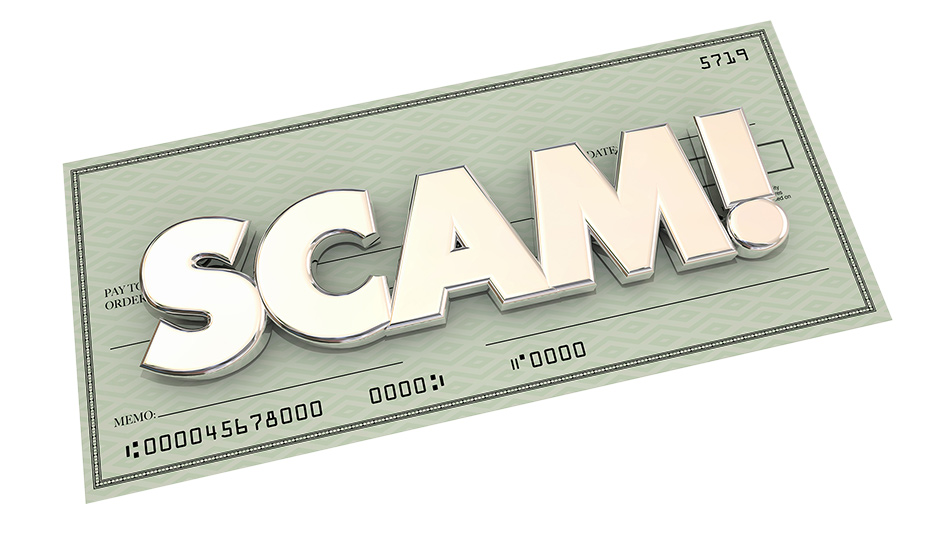PSA: Beware!
Sharon Koehler
Stone Industry Consultant
 Can you keep a secret? Shhhh, don’t tell anyone what I am about to say. If you tell people, there will be panic in the streets, and we definitely don’t want that! What’s the secret?
Can you keep a secret? Shhhh, don’t tell anyone what I am about to say. If you tell people, there will be panic in the streets, and we definitely don’t want that! What’s the secret?
THE HOLIDAYS ARE HERE!
Yep, it’s that time of year. Thanksgiving, Feast of St Nicholas, Hanukkah, Feast of Our Lady of Guadalupe, Las Posadas, Yule, Festivus, Christmas, Kwanzaa, Boxing Day, and so many more, are here.
Along with all these holidays comes an uptick of shopping and gift-giving aka gift purchasing. Meaning… we are shopping in places we wouldn’t normally shop and writing/sending checks we wouldn’t normally write or send.
On a personal level, I can’t remember the last time I wrote a check for anything. I pay most things by automatic payment, the payment option on a lot of websites like credit cards or utilities. Or I use my bank’s bill pay system. So, I was quite surprised to learn that check fraud is up roughly 385% since the pandemic, to more than $1 BILLION per year.
Of that 385%, 87% is mail theft. Meaning: that check you wrote to your sister to cover your part of a holiday expense and put in the mailbox or that check you send to your niece, nephew, cousin, grandkid or friend as a “holiday tradition” is in jeopardy of being stolen and fraudulently used to rob you.
How do criminals use your checks? There are many ways, but these are the most popular:
- Check washing – Checks are washed in chemicals to remove the ink and then other payees and amounts can be written on the check, usually for much more than the check was originally written for.
- Check Cooking aka Check Baking – A scammer, crook, criminal, or bad guy just needs to take a digital photo of a stolen check and then use commercially available software to alter it to make counterfeit checks, more than likely with the intent to clean you out in the process.
- Fake Check Scams – The above-mentioned scammer, crook, etc. sends you a check or money order worth more than the amount owed to you and instructs you to wire the excess funds back to them before receiving your lump sum payment. After you’ve sent the money, you find out that the check or money order is bogus.
So now that you know how it happens, what can you do to prevent yourself from becoming a victim?
- Write checks with black gel ink pens. It dries quickly, adheres to the check paper better and is harder to “wash” off. Or look for and use “Fraud Prevention Gel Pens.” One company advertises their gel pens as “protection against water, fading and fraud”.
- Don’t put checks in your mailbox – Mail them from the post office.
- Use certified mail or a trackable service like UPS or Fed-Ex.
- Use electronic payments when you can – ACH payments, wire transfers and digital wallets help to cut down on check fraud.
- Keep your checks in a secure place – Handymen, contractors, delivery people, caterers, house cleaners, etc. are more likely to be in your home or business during the holidays. Admittedly, all these people are more than likely honest and above board, but there is always a hiring crunch at the holidays and all it takes is 1 second of temptation for a not-so-honest person to do you in.
- Don’t leave any blank spaces on your checks – Write out the full amount in both numbers and words and draw a line through any remaining space. This prevents anyone from adding extra numbers or names to alter the check’s intended amount or payee.
- Look at your bank accounts often – (I look at mine everyday). A lot of times crooks will start out with a small amount to see if you notice. If you don’t then they get bigger and bolder with your inattention.
- Use secure check stock – Secure checks include multiple security features such as watermarks, micro-printing, security threads, and chemical-sensitive paper. These features make it harder for the bad guys to alter or counterfeit checks without detection.
- If you are expecting a check for some reason, check your mailbox frequently – Don’t let your mail sit there for days at a time. Plus, if you are going away, stop your mail at the post office or have a friend get your mail out of your mailbox.
If you are a business, ask your bank/credit union if they have positive pay or a similar system. It works by requiring businesses to provide their banks with a list of checks they have issued, including details such as check number, payee, and amount. When a check is presented for payment, the bank cross-references it against the list. If something doesn’t match up, the check is flagged for further verification or inspection.
The holidays are here. We are mailing things we wouldn’t normally mail and writing checks we wouldn’t normally write, and the bad guys know it. This is prime time for them to take advantage of you. Just be careful and enjoy the holidays.
Please send your thoughts and comments on this article to Sharon Koehler at Sharonk.SRG@gmail.com .